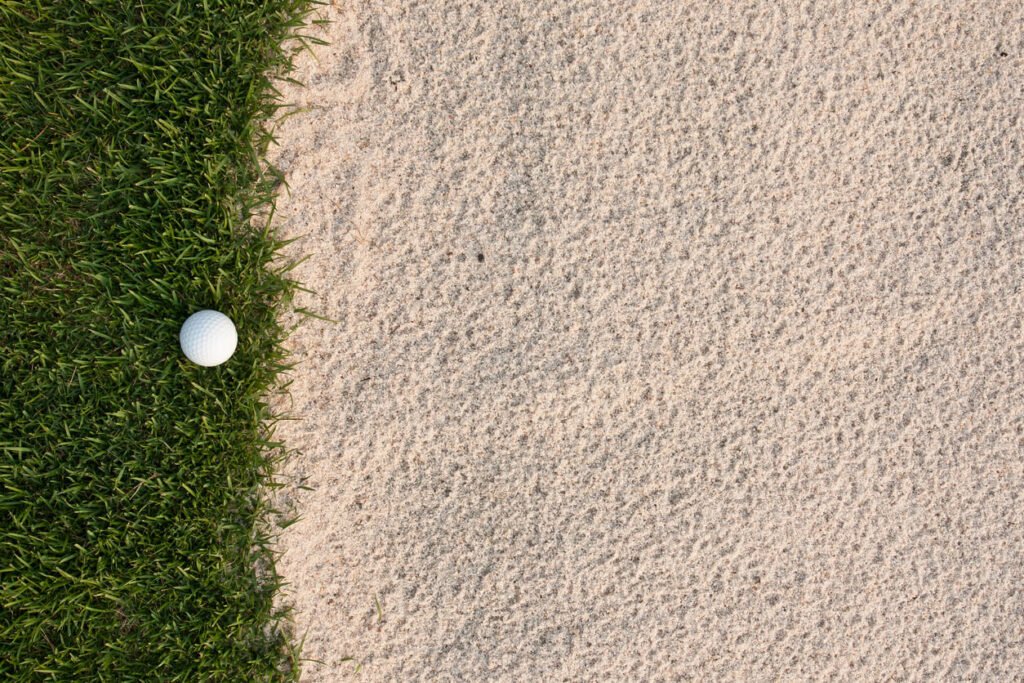A drop in golf is often a misunderstood concept, so if you’ve ever asked the question How does a drop work in golf?, you certainly won’t be alone.
However, in this blog, we’ll answer that question so you can drop with confidence.
How does a drop work in golf?
Firstly, when taking relief, you
must drop your ball, whether under penalty or not. If you have a caddy, they can’t
drop your ball for you—that’s your responsibility.
Since 2019, the rules now state that when dropping, you have to do so from knee height. Prior to the change, dropping was instead done from shoulder height.
When the rules changed at the beginning of 2019, it was initially met with criticism regarding how silly it looked to drop the ball from knee height—but there was, in fact, some sound thinking behind it.
Dropping from knee height
At the time of the rule change, the USGA’s Thomas Pagel explained: “It’s not just a drop from knee height, but now it’s a focus on the relief area. People say that dropping from shoulder height is simple, and it is, but under the old rules, there were nine different times you had to re-drop. We wanted to eliminate all those complications.
“In order to focus on that new
relief area, we said, ‘Let’s get the player closer to the ground, and if you
drop it from knee height, that ball is going to bounce a little less.’”
When dropping, the ball must first
strike the ground and stay within the relief area. If it lands inside and rolls
out, or vice versa, then you need to drop the ball again.
To better understand where to drop your ball, though, you need to understand where your reference point is, and these differ depending on the type of relief you’re getting.
Knowing your reference point

- If your ball is unplayable, the reference point is where the ball lies
- If your ball is in a penalty area (for example, a body of water or an area which has been defined as unplayable or where a ball is often lost), the reference point is where the ball crossed the edge of the penalty area
- If you’re taking back-on-the-line relief, the reference point is where the ball first hits the ground when dropped
- If
your ball comes to rest in ‘abnormal course conditions’, such as temporary
water, ground under repair, cart paths, or sprinkler heads, the reference point
is the nearest point to where your ball lies. However, this can’t be
nearer to the hole and is the spot where you can play your next shot with no
interference from where you are dropping
You may stand either inside or
outside the relief area when dropping your ball.
As of 2019, the term ‘penalty area’
has superseded ‘water hazard’. You can play the ball as it lies in a penalty
area, and you can ground your club.
Golfers have three options if taking relief…
1. Stroke-and-distance relief
If you’re certain that your ball is in a penalty area, you can return to where your last shot was played from, drop your ball within one-club length, and play it with a one-shot penalty. If it was a tee shot, you can play it from any area of the tee.
2. Back-on-the-line relief
Locate where your ball last crossed the penalty area, and you can go back as far as you want on a line that keeps that point between you and the hole. You can now drop your ball, and it can move in any direction from that spot.
3. Lateral relief
Here, you can measure a relief area
of two club lengths (not nearer the hole) from your reference point of crossing
the penalty area and drop it in this relief area. The penalty, again, is one
stroke.
Another key point to understand is the size of the relief area from your reference point. If you’re dropping from some abnormal course conditions, it’s one-club length, and if you’re dropping from an unplayable ball or a ball in a red penalty area, it’s two-clubs length.
If the ball doesn’t stay in the
relief area, simply drop it again. If this happens for a second time, place the
ball where the ball landed when you re-dropped it.
Another rule change also stipulates
that the longest club in your bag cannot be your putter, so anyone using an
extended putter can’t gain an advantage.
Interestingly, you can leave the headcover on your driver when measuring, but the extra length does not count.
How does a drop work in golf?

Points to remember
* Before lifting your ball, you must mark the spot. You can use a ball marker behind or next to the ball or hold a club on the ground right behind or right next to your ball. If you fail to do either of these, you will receive one penalty stroke.
* You can clean your ball when it is on the putting green or when you’re taking free relief or a penalty drop. However, you CAN NOT clean your ball when:
- checking to see if it’s cut or cracked
- lifting it to identify it—though you can clean mud away to do so
- it is interfering with another player away from the green
- checking to see if it has settled into an indentation—however, if you take relief from an embedded ball, you are then allowed to clean it
If you fail to comply with the above, you will be penalised one stroke.
Dropping in golf can take a while to get the hang of, particularly if you’re new to the game. However, read up on the rules mentioned above and refer to this guide the next time you need to take a drop. You’ll be dropping with confidence in no time.
Being clued up on the rules when it comes to dropping in golf will make you a more competent and confident player.
However, if you’re playing golf regularly, you might want to consider protecting yourself and your equipment with specialist golf insurance in case the worst should happen.
With Golf Care, policies include Equipment Cover up to £7,500 and Public Liability of up to £10m, so you can worry less and play more.
Click on the banner below to learn more and get a quote.
![]()


